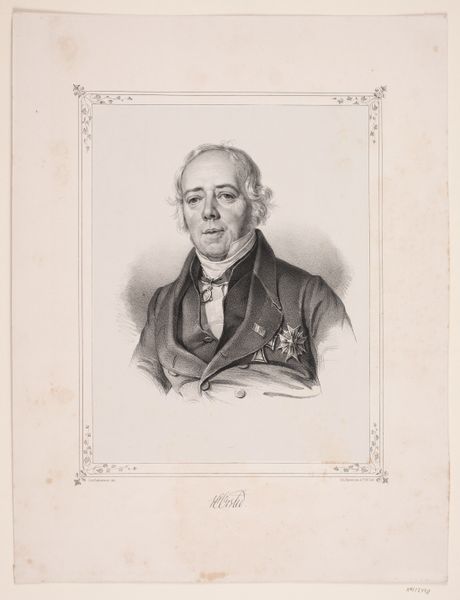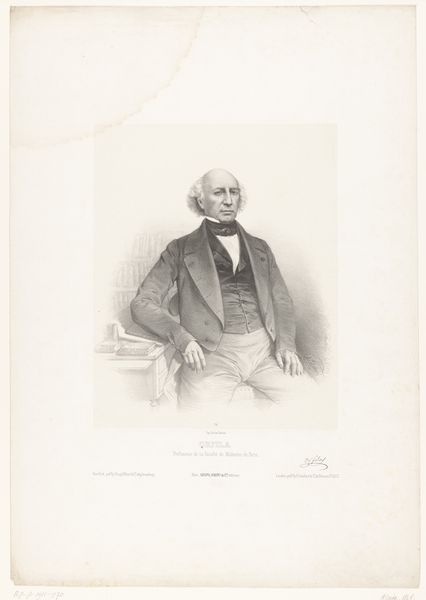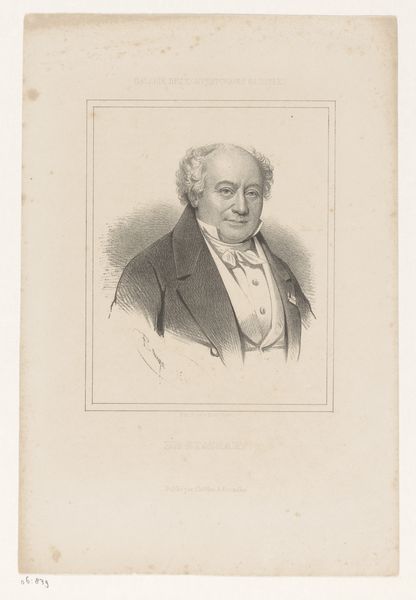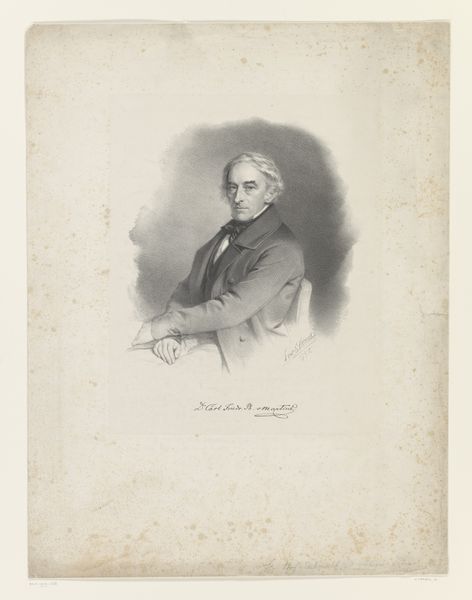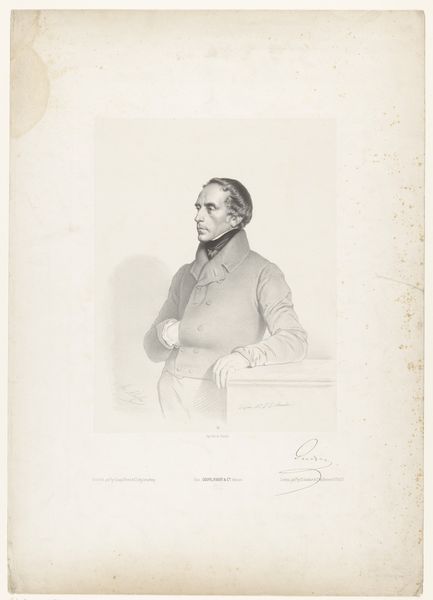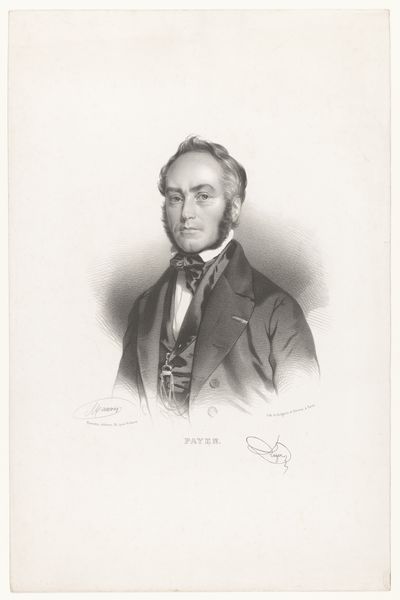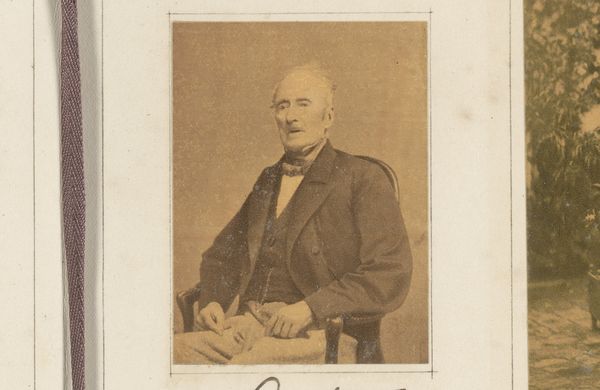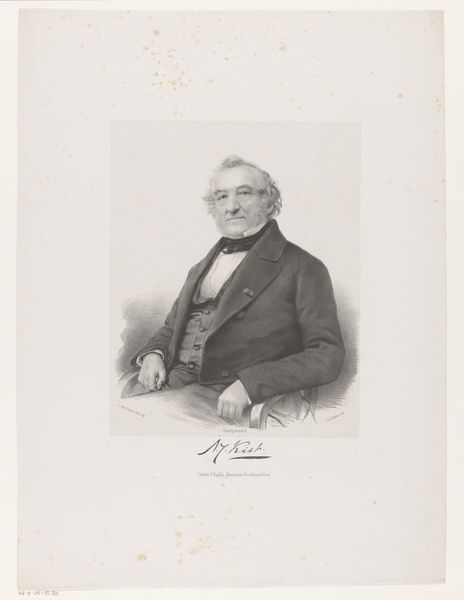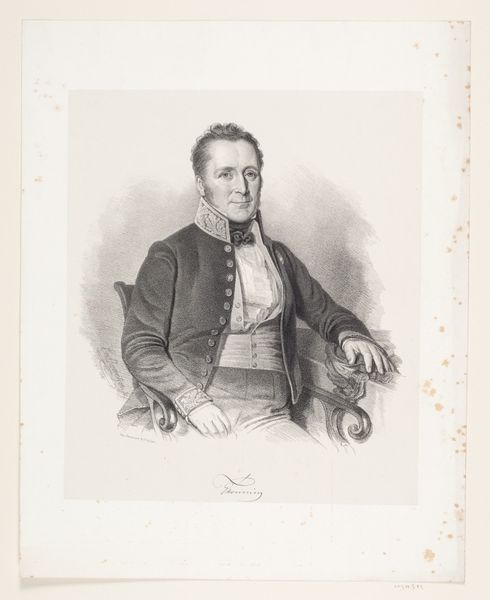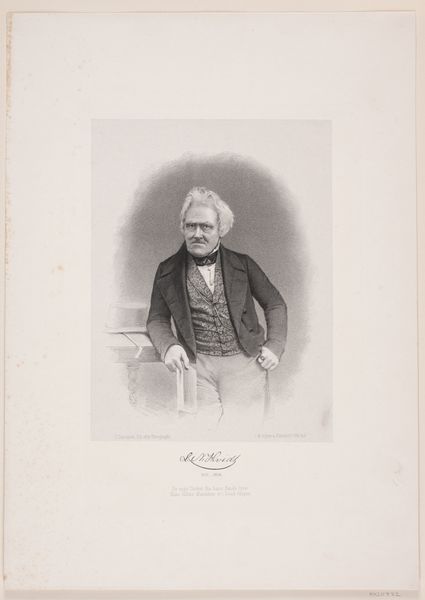
drawing, lithograph, print
#
portrait
#
drawing
#
lithograph
# print
#
portrait reference
#
pencil drawing
#
19th century
#
academic-art
Dimensions: 353 mm (height) x 266 mm (width) (bladmaal)
Editor: Here we have Emil Bærentzen's lithograph of Steen Steensen Blicher, created sometime in the 1840s. There’s a certain formality to it; the sitter is neatly framed, dressed in a dark coat, and his gaze is steady. It feels like it's making a statement about the importance of the subject. What strikes you about this piece? Curator: Well, the formality you mention points directly to the role portraits played in constructing and reinforcing social hierarchies in the 19th century. Lithographs, as a relatively accessible print medium, made these images of important figures more widely available, shaping public perception. Bærentzen choosing this medium is in itself interesting. Editor: Interesting! So, its accessibility democratized representation, to some extent? Was that a conscious decision, perhaps, related to Blicher's own socio-political position? Curator: Precisely. Blicher was a significant figure in Danish cultural identity, and mass-produced portraits amplified his public image. But accessibility doesn't necessarily mean subversion. Consider the framing—the ornamental border. What effect does it have? Editor: It seems to elevate the subject. It adds an aura of importance, containing and defining the space. Curator: Exactly. This framing mechanism, coupled with the deliberate gaze and conventional attire, reinforces a specific narrative of Blicher. Who do you think the intended audience was for such prints? Editor: Probably those who admired Blicher – his readers and those invested in Danish national identity? Maybe even as a symbol of cultural capital for those who could afford it? Curator: Precisely. These prints weren't simply artistic expressions; they were active participants in constructing cultural memory and defining who belonged within the imagined community of the nation. This helps me consider what social roles were served by portraits like this. Editor: I hadn't considered how deliberately these images functioned in shaping public identity! It’s given me a totally new perspective. Thanks!
Comments
No comments
Be the first to comment and join the conversation on the ultimate creative platform.
